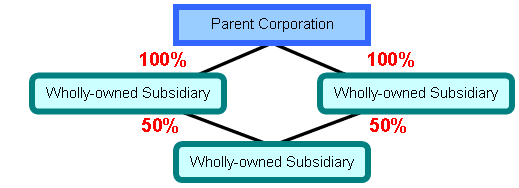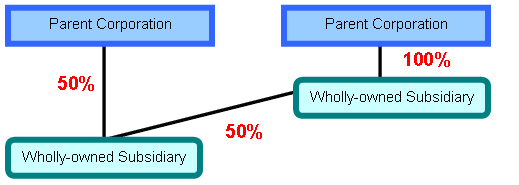Determining wholly-owned subsidiaries of Crown corporations for the purposes of the Access to Information Act and Privacy Act
Crown Corporation Issue Note
Issue:
What constitutes a Crown corporation wholly-owned subsidiary under the Access to Information Act and Privacy Act?
Context:
The Access to Information Act and the Privacy Act provide individuals with the opportunity to request and obtain information under the control of government institutions. The Acts define "government institutions" to include any government body or office identified in the schedules to the Acts, as well as parent Crown corporations and any wholly-owned subsidiaries within the meaning of section 83 of the Financial Administration Act (FAA). Unlike other institutions which must be added directly to the Access to Information Act's and Privacy Act's schedules, the legislation applies to new parent Crown corporations or wholly-owned subsidiaries immediately upon their creation.
Analysis:
Under section 83 of the FAAFootnote 1 , a subsidiary can be wholly-owned either through ownership of its shares, or by control over appointment of its directors. Generally, a subsidiary is considered wholly-owned in the following situations:
- 100% of the shares of the subsidiary corporation
are held by one or more parent Crown corporations [FAA s.
83(4)(a)].
- For examples, refer to Annex A (diagram representations 1 and 2).
- The subsidiary is held by one or more Crown
corporation and/or subsidiary(ies), with the Crown
corporation subsidiary(ies) being completely under the
ownership or control of one or more parent Crown corporations
[FAA s. 83(4)(a)].
- For examples, refer to Annex A (diagram representations 3 and 4).
- All the directors of the corporation are
appointed by the Board of Directors of one or more parent
Crown corporation(s) and/or their subsidiaries [FAA s.
83(4)(b)].
Examples:- Crown corporation 'A' appoints 100% of the directors on the board of Subsidiary corporation 'X'.
- Crown corporation 'A' appoints 100% of the directors on the board of Subsidiary corporation 'C'. Subsidiary corporation 'C' appoints 100% of the directors on the board of its subsidiary, Subsidiary corporation 'X'. As a result, Subsidiary corporation 'X' is wholly-owned indirectly by Crown corporation 'A'.
- All the directors of one or more parent Crown
corporation(s) and/or subsidiary corporations are, by virtue
of their being directors of that other corporation(s), the
directors of the subsidiary corporation [FAA s.
83(4)(c)].
Examples:- All directors of Corporation 'A' are directors on the board of Subsidiary corporation 'X'.
- All the directors of Crown corporation 'A' are directors on the board of Subsidiary corporation 'C'. All the directors of Subsidiary corporation 'C' are also the directors of its subsidiary, Subsidiary corporation 'X'. Therefore, Subsidiary corporation 'X' is wholly-owned indirectly by Crown corporation 'A'.
Conclusion:
For the purposes of the Access to Information Act and the Privacy Act, the determination of what constitutes a wholly-owned subsidiary is based on section 83 of the Financial Administration Act.
With wholly-owned subsidiaries becoming subject to the Access to Information Act and Privacy Act immediately upon their creation, it is important that the government receive timely information from Crown corporations concerning the creation and dissolution of wholly-owned subsidiaries, in order to be able to continuously track the organization covered by the Acts.
Further information:
Updated
September 2010
Prepared by
Treasury Board of Canada Secretariat,
Government Operations Sector,
Governance Directorate
Consultation
Chief Information Officer Branch
Treasury Board Portfolio Legal Services
Annex A
The following diagrams show examples of subsidiaries that are wholly-owned through holding the outstanding shares.

Figure 1 - Text version
Le diagramme suivant montre l'exemple de filiale à cent pour cent grâce à la propriété des actions en circulation. i.e. Détenue directement par une société d'État mère (100%).

Figure 2 - Text version
The diagrams shows an example of subsidiaries that are wholly-owned through holding the outstanding shares i.e. Directly held by more than one parent Crown corporation (50%).

Figure 3 - Text version
The diagrams shows an example of subsidiaries that are wholly-owned through holding the outstanding shares i.e. Indirectly held through more than one wholly-owned subsidiary (50%) of a parent Crown corporation (100%).

Figure 4 - Text version
The diagrams shows an example of subsidiaries that are wholly-owned through holding the outstanding shares i.e. Held by a combination of a parent Crown corporation(s) (50 or 100%) and one or more wholly-owned subsidiaries (50%).